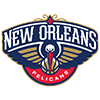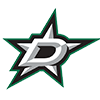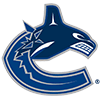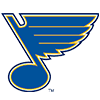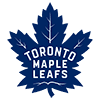We appear to have fully entered trade season, at least judging by the increase in activity in my own leagues over the past two weeks. The bottom few teams in dynasty leagues are already starting to think about next year, while managers in single-season leagues have enough of the season under their belt that they have a pretty clear sense of what weaknesses they need to address.
The trade market in dynasty leagues typically revolves around the competing/rebuilding axis. While it's certainly possible that two contenders can have surpluses and weaknesses that overlap, most trades in dynasty leagues see a contender giving up assets for present talent. Those dynamics can make it easier for both contenders and rebuilders to find a trade partner, as the pool of teams they should be engaging with is relatively straightforward.
The dynamics in redraft leagues aren't always as obvious. Yes, you can just look at the categories you're weak in and try to engage with the teams that are strong in those stats, but there's sometimes more to it than that. Here are some thoughts on how I'd approach an early deficit in each of the 10 standard fantasy categories:
Batting Average: Hitters' averages can deviate from their true talent by quite a bit over relatively small samples. There may be more help on the wire available in this category than in most as a result. It'll take the form of players who are hitting .210 but with an xBA of .260. Alternatively, if
We appear to have fully entered trade season, at least judging by the increase in activity in my own leagues over the past two weeks. The bottom few teams in dynasty leagues are already starting to think about next year, while managers in single-season leagues have enough of the season under their belt that they have a pretty clear sense of what weaknesses they need to address.
The trade market in dynasty leagues typically revolves around the competing/rebuilding axis. While it's certainly possible that two contenders can have surpluses and weaknesses that overlap, most trades in dynasty leagues see a contender giving up assets for present talent. Those dynamics can make it easier for both contenders and rebuilders to find a trade partner, as the pool of teams they should be engaging with is relatively straightforward.
The dynamics in redraft leagues aren't always as obvious. Yes, you can just look at the categories you're weak in and try to engage with the teams that are strong in those stats, but there's sometimes more to it than that. Here are some thoughts on how I'd approach an early deficit in each of the 10 standard fantasy categories:
Batting Average: Hitters' averages can deviate from their true talent by quite a bit over relatively small samples. There may be more help on the wire available in this category than in most as a result. It'll take the form of players who are hitting .210 but with an xBA of .260. Alternatively, if you're doing well in the power stats, you may make a natural match with someone who's weak in homers or RBI but strong in average.
Runs and RBI: To a large extent, these are proxies for playing time. Obviously, more talented players will do better here in the same number of at-bats, but both stats rely heavily on the performance of a player's teammates, so simply playing everyday is a good way to rack up a respectable number. Try sending away a flashy part-timer for a boring compiler, the sort of player who may bore your leaguemates to the point that they don't realize how much value they're actually sitting on. Alternatively, if you're in a shallow enough league that boring but not terrible players who play everyday are on the wire, consider them more strongly than you normally do.
Home Runs: Homers are generally inversely correlated with average and steals. Outside of the top tier, players usually generate most of their value from either their power or their contact and speed but not both, as they'd be a top-tier player if they did both. That means you're a natural fit to trade with someone who's doing well in homers but poorly in one or both of batting average and stolen bases.
Stolen Bases: Steals tend to be on an island compared to other stats. There's some overlap between high-contact guys and speed guys, but there are plenty of players whose only real fantasy value comes from their legs. That means you can theoretically trade from a strength in any category in order to acquire a steals specialist, though you may have to consider streaming steals if your leaguemates prove hesitant to deal away speed.
Wins: So much of what goes into a win, such as run support and whether the bullpen can hold onto a lead, is completely out of a pitcher's hands, so it's worth checking whether your struggles here may be mostly luck. If you're trailing because you're behind your leaguemates in total games started, that's a worry, but it can be addressed by lowering the threshold for what counts as an opponent worth using a starter against, accepting a hit to ERA and WHIP in exchange for more chances at wins.
Strikeouts: Like wins, strikeouts are a counting stat, so being less picky about when to use your starters and picking up more two-start pitchers can help here. Additionally, lower-tier starters tend to either get a lot of whiffs with shaky ratios or provide decent ratios without a lot of strikeouts, so you may be able to find a match with a leaguemate who is doing well in strikeouts but is lagging in ratios.
ERA and WHIP: These categories are the inverse of wins and strikeouts, so raising your threshold of what counts as a viable start as well as trading with someone who's strong in ratios but poor in the counting stats are both good plans. Consider also picking up an elite middle reliever who's strong in these categories but doesn't pitch in much elsewhere.
Saves: As with steals, saves exist on an island, with most teams drafting two or three players exclusively for their contribution in this category. You should theoretically be able to trade from a surplus anywhere else to acquire a closer from someone strong in saves but weak elsewhere, though teams may hesitate to deal saves. If that's the case, consider devoting a bench slot or two purely to speculating on potential closers.
Sticking with the theme of trade season, I've decided to invert the theme of this column for this week in an effort to help people find potential trade targets. While I always aim to cover players who are changing in sustainable ways, the focus is usually on the recent past, with players earning spots based on what they've shown over the last few weeks. This time, I'm specifically going to focus on players who haven't shown a new level based on their surface stats but whose expected stats suggest a new level is about to arrive. If you're in a sharp league, your potential trade partners will be looking at these same underlying numbers, but even there, you may be able to find someone who doesn't fully believe a given player's numbers are about to change. If you're in a league where not many other managers are invested enough to subscribe to RotoWire, on the other hand, there's a good chance you can snag one of these about-to-risers for an inexpensive price.
About-to-Risers
 Alex Cobb, SP, Giants: The gap between Cobb's ERA and his ERA estimators is about as large as I've ever seen at this point in the year. FIP, xFIP and SIERA all peg him somewhere between 2.34 and 2.63, yet he's sitting on a 5.73 ERA after eight starts. Among the 109 pitchers who have made at least that many starts this season, he ranks 100th in ERA but second in xFIP, trailing only Shane McClanahan. To put it another way, here's he compares to teammate Logan Webb in Webb's breakout 2021 campaign:
Alex Cobb, SP, Giants: The gap between Cobb's ERA and his ERA estimators is about as large as I've ever seen at this point in the year. FIP, xFIP and SIERA all peg him somewhere between 2.34 and 2.63, yet he's sitting on a 5.73 ERA after eight starts. Among the 109 pitchers who have made at least that many starts this season, he ranks 100th in ERA but second in xFIP, trailing only Shane McClanahan. To put it another way, here's he compares to teammate Logan Webb in Webb's breakout 2021 campaign:
| Pitcher | Year | K% | BB% | GB% | ERA |
|---|---|---|---|---|---|
| Logan Webb | 2021 | 26.5% | 6.0% | 60.9% | 3.03 |
| Alex Cobb | 2022 | 28.7% | 7.3% | 65.4% | 5.73 |
Webb combined better than average strikeout and walk marks with an elite groundball rate to establish himself as the ace of the Giants' staff last season. Cobb has been meaningfully better in both the strikeout and groundball department this year, and his walk rate, while slightly worse, is still better than league average. The results should start to look much better once his .402 BABIP and 52.1 percent strand rate normalize, making him the best buy-low pitcher out there.
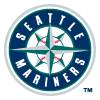 Robbie Ray, SP, Mariners: There's a case to be made that Ray is already rising, it's just that his rise has been hidden by a handful of homers. His velocity and strikeouts were worryingly down over his first four starts, a stretch in which he whiffed 17.6 percent of opposing batters while averaging just 92.3 mph, but he escaped with a respectable 3.91 ERA over that run. He owns a much worse 5.35 ERA since that point, but his velocity jumped back up to 93.7 mph as his strikeout rate spiked to 33.6 percent, above even his 32.1 percent mark from last season. His 8.7 percent walk rate over those six starts, while worse than his 6.7 percent walk rate from last year, is still far better than the 12.3 percent walk rate he had from 2017 through 2020, indicating that his previous flaws haven't necessarily returned. If not for a 16.7 percent HR/FB rate over that recent run, a number which sits far worse than the league's overall 11.3 percent mark over that stretch, his ERA might look very different.
Robbie Ray, SP, Mariners: There's a case to be made that Ray is already rising, it's just that his rise has been hidden by a handful of homers. His velocity and strikeouts were worryingly down over his first four starts, a stretch in which he whiffed 17.6 percent of opposing batters while averaging just 92.3 mph, but he escaped with a respectable 3.91 ERA over that run. He owns a much worse 5.35 ERA since that point, but his velocity jumped back up to 93.7 mph as his strikeout rate spiked to 33.6 percent, above even his 32.1 percent mark from last season. His 8.7 percent walk rate over those six starts, while worse than his 6.7 percent walk rate from last year, is still far better than the 12.3 percent walk rate he had from 2017 through 2020, indicating that his previous flaws haven't necessarily returned. If not for a 16.7 percent HR/FB rate over that recent run, a number which sits far worse than the league's overall 11.3 percent mark over that stretch, his ERA might look very different.
 Alex Verdugo, OF, Red Sox: Statcast's expected stats may be less precise this year than usual given that expectations have to shift with the new, less lively ball, but players around the league should be affected relatively similarly, so it's still useful to note that Verdugo entered play Monday tied for the largest gap between his wOBA and expected wOBA. The 26-year-old outfielder owns a very disappointing .232/.269/.345 line on the season, but a glance under the hood reveals a player who could just as easily be in the midst of a career year. His 11.0 percent strikeout rate is a career low, while his 9.2 percent barrel rate is a career high and represents the first time he's been above average in that category. He's shown signs of his luck turning around over the last two weeks, as he's hitting .304/.333/.413 over his last 11 games, so the window to buy low could end soon.
Alex Verdugo, OF, Red Sox: Statcast's expected stats may be less precise this year than usual given that expectations have to shift with the new, less lively ball, but players around the league should be affected relatively similarly, so it's still useful to note that Verdugo entered play Monday tied for the largest gap between his wOBA and expected wOBA. The 26-year-old outfielder owns a very disappointing .232/.269/.345 line on the season, but a glance under the hood reveals a player who could just as easily be in the midst of a career year. His 11.0 percent strikeout rate is a career low, while his 9.2 percent barrel rate is a career high and represents the first time he's been above average in that category. He's shown signs of his luck turning around over the last two weeks, as he's hitting .304/.333/.413 over his last 11 games, so the window to buy low could end soon.
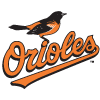 Ryan Mountcastle, 1B/OF, Orioles: Mountcastle is the player who's tied with Verdugo for the largest gap between his actually and expected wOBA, and while I'm cautious with my expectations for Orioles righties this season after the left field wall at Camden Yards was moved back over the winter, there's reason to buy into a big bounceback for the 25-year-old. He's hitting just .250/.282/.372 on the season, but Statcast suggests he should be hitting .312 and slugging .552. There remains a huge red flag in his profile with his very poor plate discipline, as he's striking out 26.9 percent of the time while walking at a 3.8 percent clip, but his 13.1 percent barrel rate (which ranks in the 87th percentile) should be enough to overcome that. Hunter Renfroe, C.J. Cron, Seiya Suzuki, Dansby Swanson and Jared Walsh all own barrel rates within one point of Mountcastle's while striking out at least a quarter of the time, and they all own a wRC+ of at least 116, 30 points better than Mountcastle's mark. Expect Mountcastle's strengths to overcome his weaknesses better than they have thus far going forward.
Ryan Mountcastle, 1B/OF, Orioles: Mountcastle is the player who's tied with Verdugo for the largest gap between his actually and expected wOBA, and while I'm cautious with my expectations for Orioles righties this season after the left field wall at Camden Yards was moved back over the winter, there's reason to buy into a big bounceback for the 25-year-old. He's hitting just .250/.282/.372 on the season, but Statcast suggests he should be hitting .312 and slugging .552. There remains a huge red flag in his profile with his very poor plate discipline, as he's striking out 26.9 percent of the time while walking at a 3.8 percent clip, but his 13.1 percent barrel rate (which ranks in the 87th percentile) should be enough to overcome that. Hunter Renfroe, C.J. Cron, Seiya Suzuki, Dansby Swanson and Jared Walsh all own barrel rates within one point of Mountcastle's while striking out at least a quarter of the time, and they all own a wRC+ of at least 116, 30 points better than Mountcastle's mark. Expect Mountcastle's strengths to overcome his weaknesses better than they have thus far going forward.
 Corey Seager, SS, Rangers: Seager hasn't been as bad as his .237/.306/.435 line may suggest, as that line is actually good for a solidly above-average 114 wRC+ given this year's suppressed run environment, but it's fair to say those who drafted him expected a lot more. Things look good enough in the power department, as his 10 homers put him on pace for 35, which would represent a career high, but his average has been held back by a .241 BABIP. His .287 xBA indicates he could be doing a full 50 points better in that category. Seager's 17.9 percent strikeout rate and 9.8 percent barrel rate both represent steps back from his 2021 marks, but both are still strong figures. Only seven other qualified hitters have matched both marks this year, with the other seven averaging a .264/.371/.485 slash line and a 145 wRC+. Seager's numbers should look more like that going forward if he keeps making frequent hard contact.
Corey Seager, SS, Rangers: Seager hasn't been as bad as his .237/.306/.435 line may suggest, as that line is actually good for a solidly above-average 114 wRC+ given this year's suppressed run environment, but it's fair to say those who drafted him expected a lot more. Things look good enough in the power department, as his 10 homers put him on pace for 35, which would represent a career high, but his average has been held back by a .241 BABIP. His .287 xBA indicates he could be doing a full 50 points better in that category. Seager's 17.9 percent strikeout rate and 9.8 percent barrel rate both represent steps back from his 2021 marks, but both are still strong figures. Only seven other qualified hitters have matched both marks this year, with the other seven averaging a .264/.371/.485 slash line and a 145 wRC+. Seager's numbers should look more like that going forward if he keeps making frequent hard contact.
 Matt Chapman, 3B, Blue Jays: Chapman got a big upgrade in both his home park and the quality of the lineup surrounding him with his move from Oakland to Toronto this offseason, but the results haven't been there thus far. His .200/.287/.356 slash line is merely good for an 86 wRC+, which would mark the first time he's been below-average in that category. Despite the park upgrade, he's on pace for just 21 homers, which would represent another full-season low. A deeper look reveals a player who may present a good buy-low opportunity, however. Most encouragingly, he's making far more contact, as his 26.0 percent strikeout rate is a big step forward from the 33.1 percent mark he struggled to over the last two years. His barrel rate is down to 11.4 percent after sitting at 14.6 percent over that stretch, but that still sits in the 80th percentile, while his hard-hit rate sits in the 98th. That contact quality should lead to better results soon.
Matt Chapman, 3B, Blue Jays: Chapman got a big upgrade in both his home park and the quality of the lineup surrounding him with his move from Oakland to Toronto this offseason, but the results haven't been there thus far. His .200/.287/.356 slash line is merely good for an 86 wRC+, which would mark the first time he's been below-average in that category. Despite the park upgrade, he's on pace for just 21 homers, which would represent another full-season low. A deeper look reveals a player who may present a good buy-low opportunity, however. Most encouragingly, he's making far more contact, as his 26.0 percent strikeout rate is a big step forward from the 33.1 percent mark he struggled to over the last two years. His barrel rate is down to 11.4 percent after sitting at 14.6 percent over that stretch, but that still sits in the 80th percentile, while his hard-hit rate sits in the 98th. That contact quality should lead to better results soon.
About-to-Fallers
 Paul Goldschmidt, 1B, Cardinals: Goldschmidt is on a remarkable run, carrying a 20-game hitting streak into Monday's action and hitting .446/.472/.880 with eight homers over that stretch. If you've gotten to take advantage of that run over the past few weeks, it's probably hard to envision parting with him, but that run makes him a potentially excellent sell-high candidate given that his underlying numbers suggest he's still more of a very good hitter and not one who's re-entered the league's inner circle of elite bats. Goldschmidt's 19.7 percent strikeout rate and 10.1 percent barrel rate are both strong marks, but neither pops off the page. 11 hitters have matched or exceeded both marks this season, and they've averaged a 142 wRC+, a number which is still very good and would tie for 26th among qualified hitters but which trails Goldschmidt's fifth-ranked 191 wRC+ by a wide margin. If you can find someone who fully buys into Goldschmidt's current results, you may be able to deal him to patch up multiple weaknesses.
Paul Goldschmidt, 1B, Cardinals: Goldschmidt is on a remarkable run, carrying a 20-game hitting streak into Monday's action and hitting .446/.472/.880 with eight homers over that stretch. If you've gotten to take advantage of that run over the past few weeks, it's probably hard to envision parting with him, but that run makes him a potentially excellent sell-high candidate given that his underlying numbers suggest he's still more of a very good hitter and not one who's re-entered the league's inner circle of elite bats. Goldschmidt's 19.7 percent strikeout rate and 10.1 percent barrel rate are both strong marks, but neither pops off the page. 11 hitters have matched or exceeded both marks this season, and they've averaged a 142 wRC+, a number which is still very good and would tie for 26th among qualified hitters but which trails Goldschmidt's fifth-ranked 191 wRC+ by a wide margin. If you can find someone who fully buys into Goldschmidt's current results, you may be able to deal him to patch up multiple weaknesses.
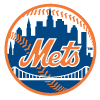 Starling Marte, OF, Mets: Marte has remained a useful player this season, as his .278/.317/.420 slash line is good for a 115 wRC+, but there are signs under the surface that the 33-year-old has begun to show his age. To start, he's merely stolen seven bases, putting him on pace for a modest 23, well below the 47 he managed last season. You have to get on base to steal, and his on-base percentage this year represents his lowest mark since his rookie season back in 2012, thanks in large part to his career-low 3.2 percent walk rate. Additionally, while he's never been confused for a power hitter, his 8.4 percent barrel rate last season ranked in the 49th percentile. This season, he's managed a poor 4.9 percent barrel rate, which sits in the 22nd percentile. His 84.3 mph average exit velocity sits all the way down in the fourth percentile. His speed should still help him outperform his expected stats, but if he continues making some of the weakest contact in the game, he won't live up to his preseason expectations.
Starling Marte, OF, Mets: Marte has remained a useful player this season, as his .278/.317/.420 slash line is good for a 115 wRC+, but there are signs under the surface that the 33-year-old has begun to show his age. To start, he's merely stolen seven bases, putting him on pace for a modest 23, well below the 47 he managed last season. You have to get on base to steal, and his on-base percentage this year represents his lowest mark since his rookie season back in 2012, thanks in large part to his career-low 3.2 percent walk rate. Additionally, while he's never been confused for a power hitter, his 8.4 percent barrel rate last season ranked in the 49th percentile. This season, he's managed a poor 4.9 percent barrel rate, which sits in the 22nd percentile. His 84.3 mph average exit velocity sits all the way down in the fourth percentile. His speed should still help him outperform his expected stats, but if he continues making some of the weakest contact in the game, he won't live up to his preseason expectations.
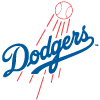 Julio Urias, SP, Dodgers: I didn't love Urias at his draft-day price, as his 26.2 percent strikeout rate, while above-average, was low for a fantasy ace. Through nine starts, that strikeout rate has plummeted to 18.3 percent, yet his ERA has somehow dropped from 2.96 to 2.49. To be fair to the 25-year-old lefty, Urias has outpitched his peripherals in the past, as his career ERA beat his xFIP by a full run and his SIERA by 0.93 runs heading into this season. This year, though, he's beating his xFIP by 1.84 runs and his SIERA by 1.79, a gap which doesn't seem remotely sustainable. He's also averaged just 92.7 mph with his fastball, over a tick worse than his mark in each of the last three seasons. There's a potential bright side here in that he averaged a season-high 92.7 mph in his most recent start, but if you can find a trade partner who looks at his ERA and values him the same as he was valued during draft season, I'd be jumping at the chance to deal him.
Julio Urias, SP, Dodgers: I didn't love Urias at his draft-day price, as his 26.2 percent strikeout rate, while above-average, was low for a fantasy ace. Through nine starts, that strikeout rate has plummeted to 18.3 percent, yet his ERA has somehow dropped from 2.96 to 2.49. To be fair to the 25-year-old lefty, Urias has outpitched his peripherals in the past, as his career ERA beat his xFIP by a full run and his SIERA by 0.93 runs heading into this season. This year, though, he's beating his xFIP by 1.84 runs and his SIERA by 1.79, a gap which doesn't seem remotely sustainable. He's also averaged just 92.7 mph with his fastball, over a tick worse than his mark in each of the last three seasons. There's a potential bright side here in that he averaged a season-high 92.7 mph in his most recent start, but if you can find a trade partner who looks at his ERA and values him the same as he was valued during draft season, I'd be jumping at the chance to deal him.
 Jose Quintana, SP, Pirates: Quintana was one of my favorite deep sleepers on the pitching side over the winter, as his 6.43 ERA last season in 63 innings as a swingman hid a strong 28.6 percent strikeout rate. That figure came with an uncharacteristically poor 11.8 percent walk rate, but for where you could draft him (650th on average in NFBC leagues), you weren't going to find nearly that sort of strikeout upside. While I've enjoyed his 2.15 ERA through nine starts on teams where I was able to land him, I'm not expecting much going forward. His strikeout rate has fallen all the way back to a pedestrian 20.0 percent, and his 4.00 xFIP and 4.22 SIERA don't paint a particularly optimistic picture of his performance. Given Quintana's career 21.3 percent strikeout rate, it now seems clear that the veteran lefty's increased whiffs last year were merely a blip and not the demonstration of a new level, so I'd be looking to deal him while his ERA still gives him some trade value.
Jose Quintana, SP, Pirates: Quintana was one of my favorite deep sleepers on the pitching side over the winter, as his 6.43 ERA last season in 63 innings as a swingman hid a strong 28.6 percent strikeout rate. That figure came with an uncharacteristically poor 11.8 percent walk rate, but for where you could draft him (650th on average in NFBC leagues), you weren't going to find nearly that sort of strikeout upside. While I've enjoyed his 2.15 ERA through nine starts on teams where I was able to land him, I'm not expecting much going forward. His strikeout rate has fallen all the way back to a pedestrian 20.0 percent, and his 4.00 xFIP and 4.22 SIERA don't paint a particularly optimistic picture of his performance. Given Quintana's career 21.3 percent strikeout rate, it now seems clear that the veteran lefty's increased whiffs last year were merely a blip and not the demonstration of a new level, so I'd be looking to deal him while his ERA still gives him some trade value.








